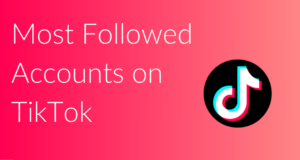It’s obvious that not every tweet is void of emotion. Sure, media outlets use Twitter to promote and share their work and businesses rely on Twitter for exposure through contests and coupon codes. But Tweeters with personal accounts often rely on the site for more than just re-tweeting; at least, that’s what a recent study by the social media website leads us to believe. In fact, not only are many tweets laced with emotion, it’s possible to guess when Twitter users will feel a certain way.
In March of 2014, Twitter released a study in which a team of researchers attempted to pinpoint when users felt certain emotions most strongly. The team looked at tweets posted in English from 2013.
People were most likely to tweet about their happiness on Fridays and Saturdays in the months of June, July, August, September, October, November, December and March. The frequency of tweets that included the phrase “feeling happy” also jumped on Mondays, Tuesdays, and Wednesdays in December; however, researchers attributed this leap to the fact that Christmas Eve and New Year’s Eve fell on Tuesdays in 2013, meaning that Christmas and New Year’s Day fell on Wednesdays.
People were less vocal when tweeting about their sadness. In searching for the phrase “feeling sad,” researchers found the most prevalent times to be blue were Sundays in July and Saturdays in December. While it’s difficult to explain away the former, December is notorious for being equally as depressing as it is happy and cheerful for those who celebrate holidays. Perhaps those who were feeling sad were upset about the chilly weather or their inability to make it home for Christmas festivities.
The study didn’t just look at basic emotions. The researchers also gathered data as to how often users tweeted that they were feeling “hungover.” Sundays in both March — which just so happens to be the month of St. Patrick’s Day, Mardi Gras, and bus rentals that lift revelers from party to party — were just as hangover-heavy as Tuesdays in February, and Thursdays and Fridays in November.
The final factor that the team researched was the phrase “late for work.” In 2013, those who were rushed in the mornings were most likely to be late in the summertime; perhaps they spend the mornings enjoying the warmth instead of clocking into the office. Mondays, Tuesdays and Wednesdays in July proved the hardest for Twitter users, although every weekday in June, July, and August had more “late for work” tweets than average. In wintertime, Wednesdays and Fridays in January caused the biggest blip on the radar, although it’s hard to attribute these jumps to any specific holiday or occasion.
Of course, this data isn’t the be all, end all when it comes to predicting human emotions throughout the year. Psychiatrist and Harvard Medical School faculty member Dr. John R. Sharp said in his book, The Emotional Calendar, that while weather, light and humidity are factors when it comes to one’s mood, the most prominent source of one’s emotions is past and present experiences that affect how he or she feels at a certain point of the year. So, while this Twitter study gives good insight into how people feel year-round, it’s always hard to say why; and, with only 140 characters at their disposal, it’s hard for Twitter users to say why, either.
About The Author:
 Savannah Marie is a social media junkie, online marketing wizard and consultantfor SEOcompanyGo. Catch up with her on Twitter and Google+
Savannah Marie is a social media junkie, online marketing wizard and consultantfor SEOcompanyGo. Catch up with her on Twitter and Google+
 Social Media Data Insights & Resources for Social Media
Social Media Data Insights & Resources for Social Media




